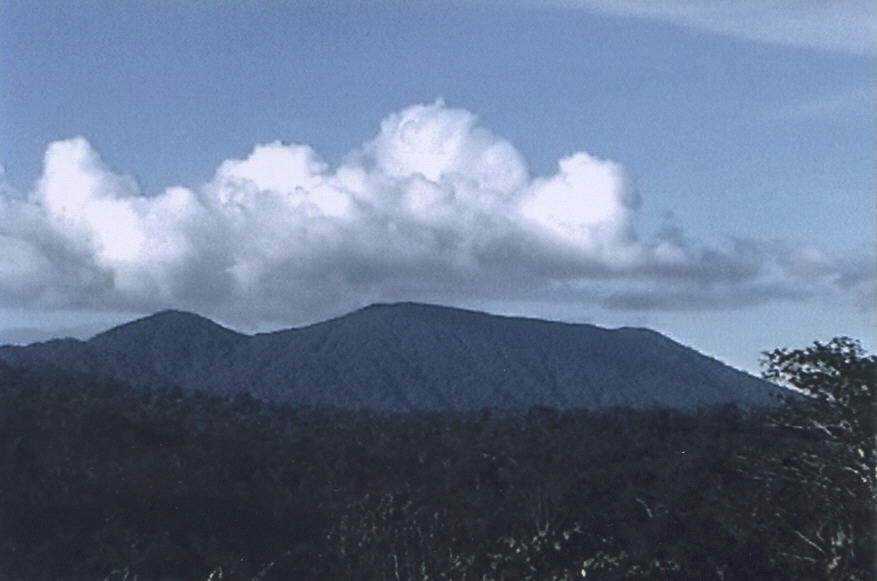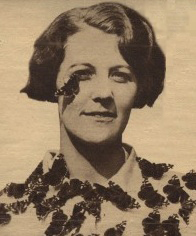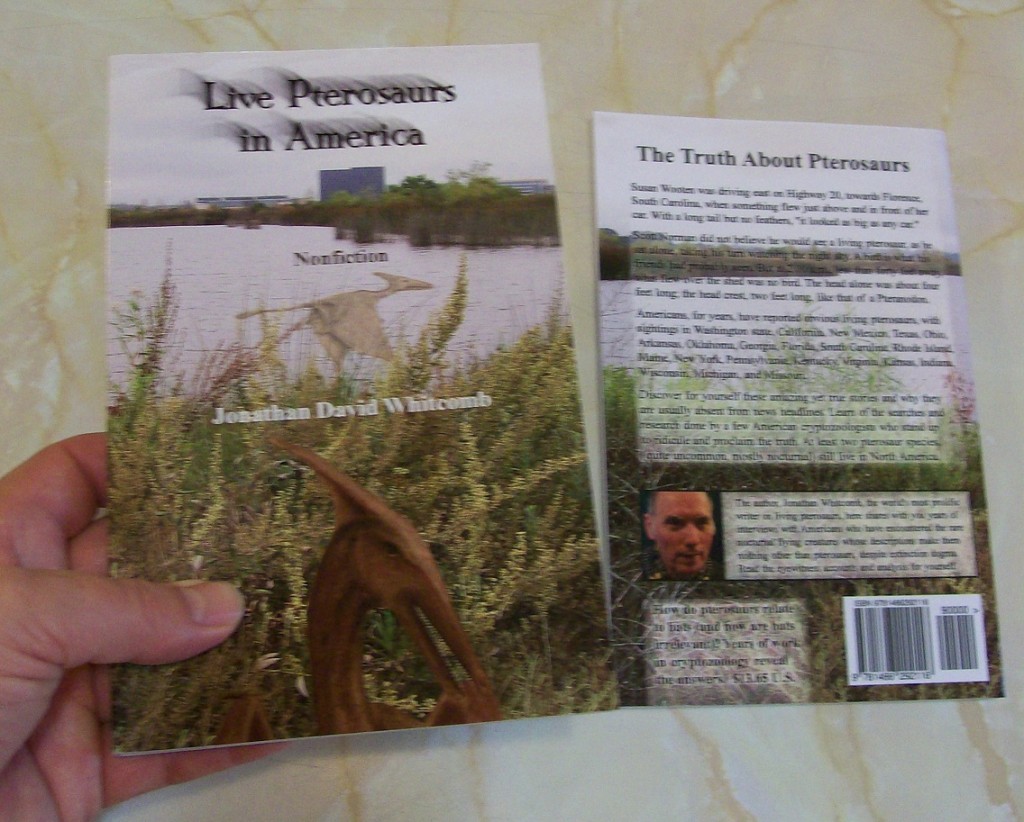
Mount Sual (Umboi Island), where the ropen light sometimes flies
For years, I have advocated multiple species of pterosaurs living in various parts of the world. Even for glowing lights in Papua New Guinea, multiple species may be involved, even when only two mountain ranges separate them. But for now, let’s consider why one species seems to be responsible for flying lights in two areas of that tropical country.
Let’s compare the words of four witnesses: three natives on Umboi Island and one British biologist on the mainland of New Guinea. Each describes flying lights: on two sides of Umboi and on the mainland to the west of Umboi.
Evelyn Cheeseman
The British biologist and explorer Lucy Evelyn Cheesman was the first woman ever hired as a curator at the Regent’s Park Zoo, in London. She traveled in the south Pacific prior to World War II, discovering a number of new species of small creatures and writing several books. But the discovery she made near Mondo, on the mainland of New Guinea, would support cryptozoological investigations many decades later.
In her book The Two Roads of Papua (1935 – London: Jarrolds), she described the flying lights:
While at Mondo I witnessed a most curious phenomenon which I could not understand; nor could I later hit upon any satisfactory explanation for it.
[One night] I spent much in time leaning over the veranda, and gazing across at the . . . jumbled hills against a purple sky. When suddenly I saw a flash of light somewhere below the horizon. It was rather a slow flash, and might have been made with an electric torch [flashlight] by someone with a finger on the switch to prolong it perhaps four seconds. . . . in a moment it came again, and this time I counted; yes about four or five seconds . . . flashes continued at intervals.
Many lights appeared like the first one, and they were strung out in a horizontal line for quite a distance, just below the top of a mountain ridge. The natives would not answer Cheesman’s questions about them so she relied on her own powers of reasoning.
But after careful observations and careful pondering, she gave up trying to explain the phenomenon. It could not have been from many natives with flashlights: The flying lights were slightly above the tree canopy, and even if natives had access to many flashlights, why would they use them in that fashion, on a long horizontal line? She became convinced that the lights were not from any human origin. But what were they?

Lucy Evelyn Cheesman, biologist
First 2004 Ropen Expedition
When I explored part of Umboi Island, Papua New Guinea, in 2004, I had no knowledge of Cheesman’s observations seven decades earlier. I was following up on the findings of other cryptozoologists, including Paul Nation (who had instructed me in how to conduct my expedition). I interviewed native eyewitnesses of the flying light and eyewitnesses of a large flying creature they call “ropen.” Natives think of them as the same thing, and my findings verified that idea.
I interviewed David Moke, a village leader, who told me about his encounter with a bright light that appeared over his head while he was fishing one night, months earlier, over a reef off the southern coast of Umboi Island. The brilliant light lasted about “five seconds.”
About a week later, I talked with another native. William Gima told me about the bright light that lit up Aupwel Village, a few weeks earlier, on the northern side of Umboi. That light lasted about “five seconds.”
Second 2004 Ropen Expedition
A few weeks after I completed my expedition, two other American cryptozoologists were exploring Umboi: Garth Guessman and David Woetzel. Many of their interviews were with islanders I had not met, in villages I had not visited.
The school teacher of Arot Village, Gibson Kuvurio, told the Americans about the ropen light:
When ropen flies, its body glows maybe around five or six seconds, but the light never glows beyond this time.
Coincidence or Bioluminescence?
Many observations of flying lights that last 4-6 seconds—those are not likely by coincidence, especially when some areas of Papua New Guinea have reports of large nocturnal flying creatures that glow as they fly. This phenomenon deserves serious scientific study, not just by cryptozoologists but by biologists.
Indava and Ropen of Umboi Island
Evelyn Cheesman appeared to have no thought about pterosaurs when she observed the strange glowing objects that flew near the top of a mountain ridge.
________________________________________________________________
Live Pterosaurs in America — third edition of nonfiction cryptozoology book
From the chapter “Marfa Lights of Texas”
His account of the strange lights of Marfa [Texas] got me thinking. Some accounts, not quite like James’s observations, involve “dancing” behavior. But if the lights are made by ropen-like animals, why would they move like that? Of course ropens in Texas might be hunting bats, but how could dancing help them catch bats? Insects! Of course lights attract insects. After two ropens have glowed in one area long enough to concentrate insects, they separate for awhile to allow the bats to feel safe in catching those insects. Soon the ropens return to catch the bats.




Regarding the biologist Evelyn Cheesman, her sighting on the mainland of New Guinea (that area is now in the nation of Papua New Guinea) may relate to the indava lights videotaped by cryptozoologist Paul Nation, in 2006. But Paul’s sighting was two mountain ranges or so to the south and the flying lights remained on for longer than six seconds. If they are not the same species of nocturnal bioluminescent flying creature, then they are still likely to be related.